Shade Loving Houseplants - 6 Popular Low-Light Indoor Plants
Do you own an apartment without a balcony? Perhaps you're looking for plants for interiors in which daylight access is strongly limited. No problem! Don't listen to those who claim you have to give up houseplants. Just pick the best indoor shade plants. Check the most popular species - must-haves for your home.
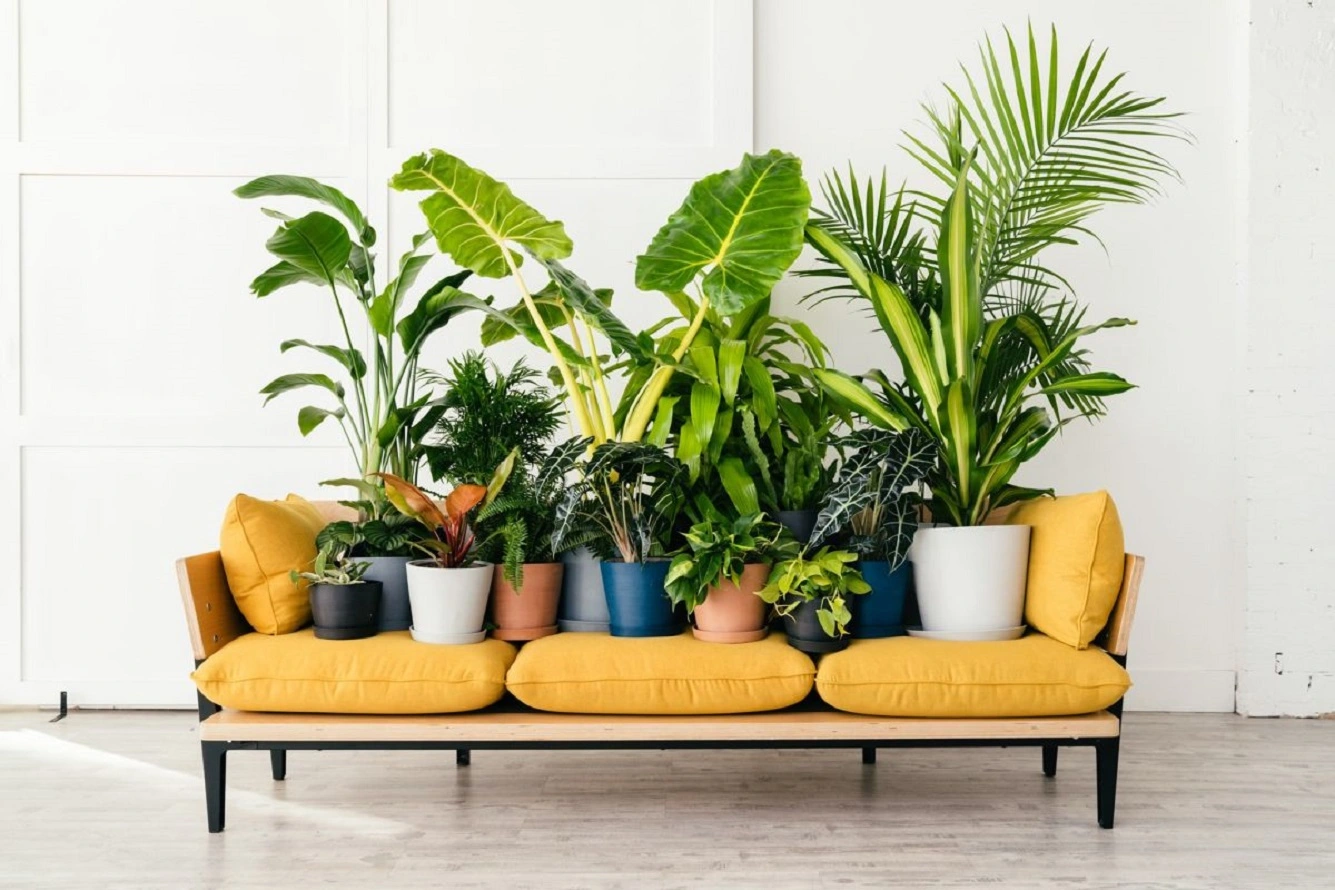
What are the characteristics of low-light indoor plants?
The fact that certain houseplants love shade doesn’t mean they don’t need light at all. It’s required for photosynthesis – but in this case, lower amounts of light suffice. Regardless, a lack of direct sun rays doesn’t affect their growth or blooming as much as other plants that need bright locations to develop.
Indoor plants for low light can be typically recognized by leaves highly saturated with dark green color. But note it’s not a rule, as some species have completely different colors.
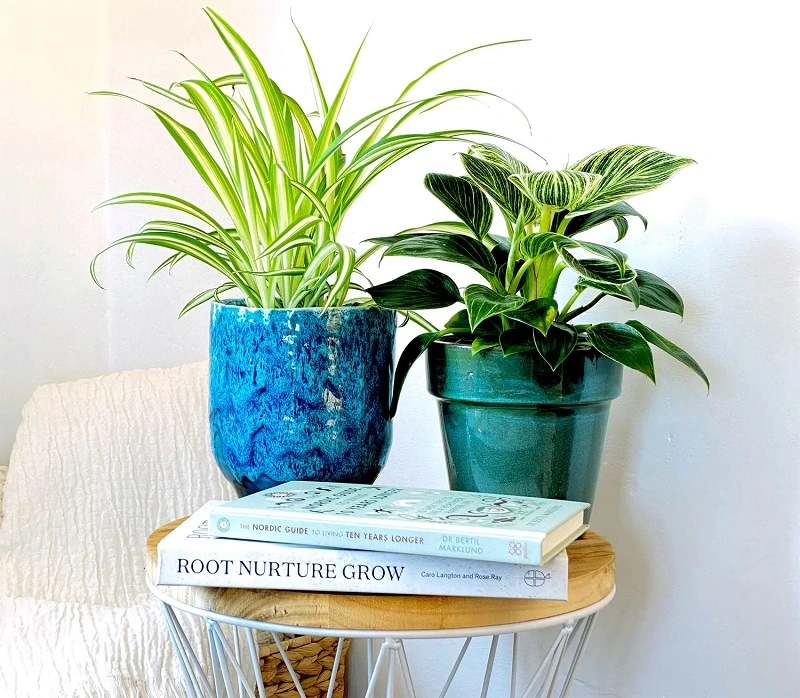
What is the best location for low-light houseplants?
Shade-loving houseplant have various needs about their growing location – depending on particular species. Some plants need access to indirect sunlight for just 2-3 hours to be able to develop properly.
Low-light houseplants preferring half-shade are the most popular. Such locations have access to indirect sunlight for several hours a day. Depending on the season, it’s between 3 and 7 hours a day.
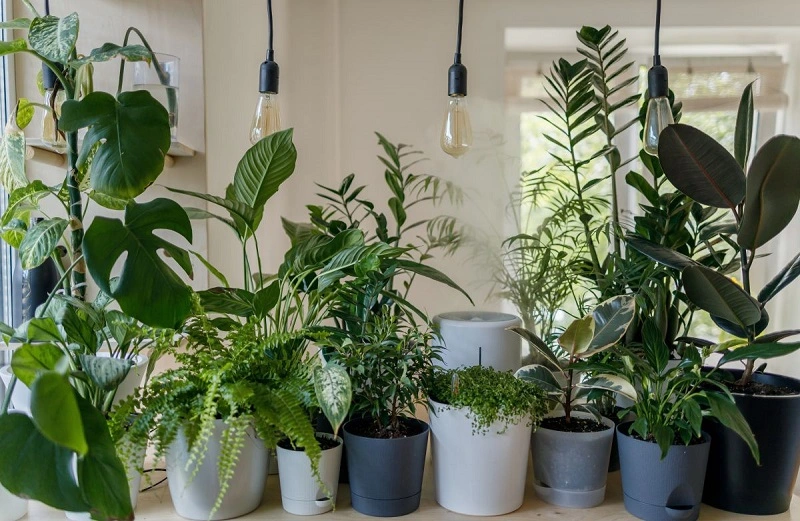
Types of low-light indoor plants
Low-light houseplants are divided into several groups of different types of growth. Thanks to this, every greenery lover can pick favourite ones, or match them with an individual interior design. The groups include:
- classic potted species that can be placed on shelves, plant stands or furniture,
- hanging plants for dark rooms,
- climbing shade-loving houseplants.
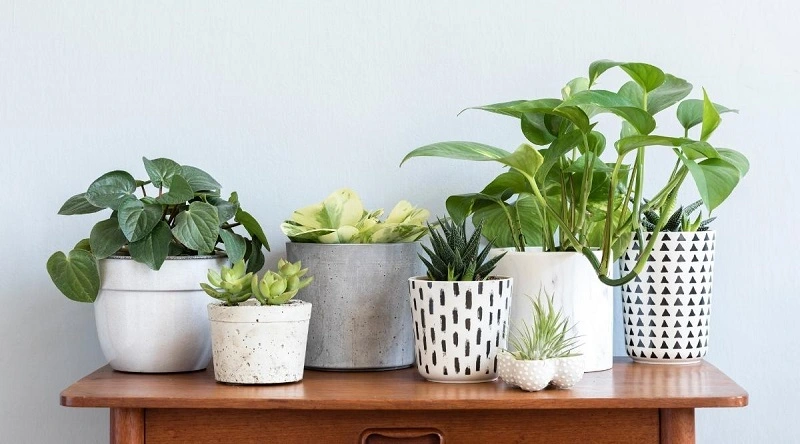
Small indoor plants for low light
Small shade-loving houseplants are perfect for small apartments. They don’t take a lot of space, which is a big plus. If needed, in case they begin to look worse, you can easily move them to a windowsill, where they will catch more sunlight.
Button fern
Button fern (Pellaea rotundifolia) is not a highly popular plant, and this is its biggest plus. Instead of picking a species everybody knows, you can decide on a houseplant that will impress everyone who visits you. Although button fern is small, it looks fascinating.
The plant comes from New Zealand and Australia. It’s classified as a fern, although it looks different from classic plants associated with this name. It has characteristic small, round leaves – appearing along stems measuring about 20-30 cm (ca. 8-12 in).
Button fern can grow in a dark room, but it requires relatively high temperatures to properly develop. 21-22°C (69.8-71.6°F) make the best conditions for this species. It’s a standard room temperature. If the warmth drops below 12-13°C (53.6-55.4°F), the plant might wilt.
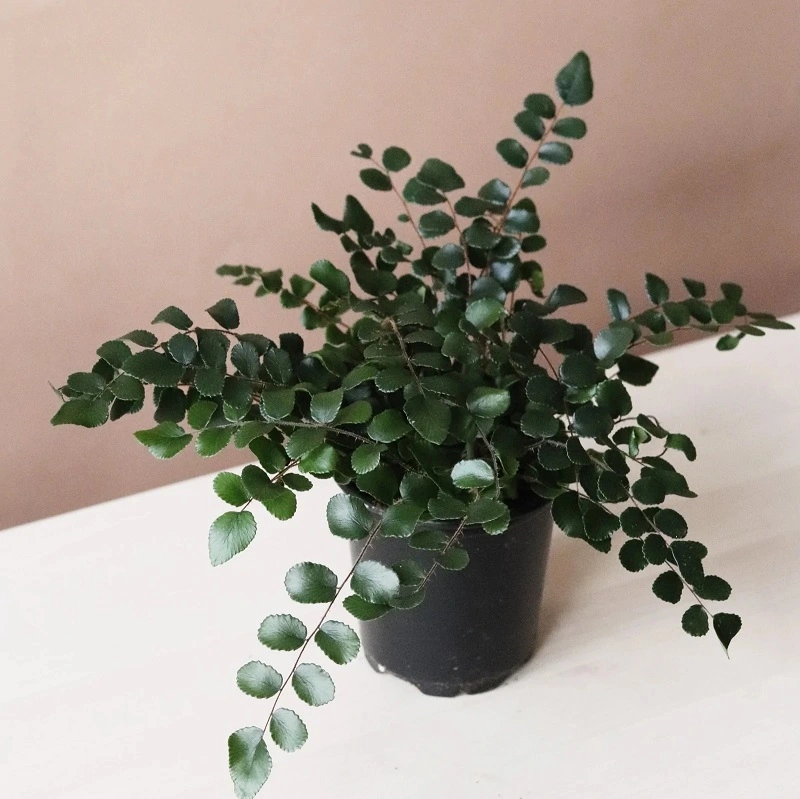
Calathea
Calathea is a quite exotic-looking shade-loving houseplant – it’s properties are not a surprise, as it comes from rainforests of Brazil. It has characteristic large leaves – they make the most of the plant. They have different colors – the edges and middles are dark, with brighter stripes in between them.
21-22°C (69.8-71.6°F) is the optimal temperature for this plant. It’s important to maintain this level, so it can properly develop.
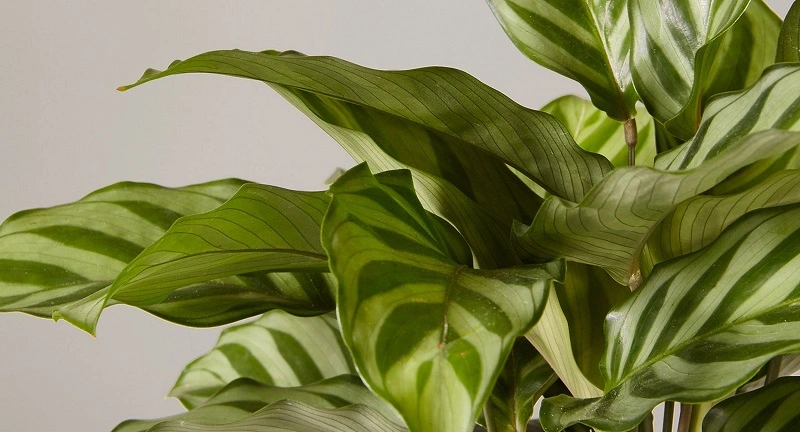
Hanging plants for dark rooms
Hanging shade-loving houseplants are perfect for decorating indoor walls. You can use them not only in a living room, but also in a hallway – as they don’t need a lot of sunlight. This group is quite numerous, and includes plants such as potted ferns.
Grape ivy
Grape ivy (Cissus rhombifolia) is a perfect example of an indoor shade plant for beginner plant enthusiasts. It’s a vine, and has little care requirements. Basically, it only needs watering from time to time. One shouldn’t water the plant too extensively, though, as this South-African plant dislikes overly damp soil.
Grape ivy’s branches have a characteristic length. A few-years-old plant can develop magnificent-looking, 3-meter-long stems.
The leaves of this houseplant are noteworthy as well. They aren’t big, but their shape is interesting. They resemble a grapevine, which many people find familiar.
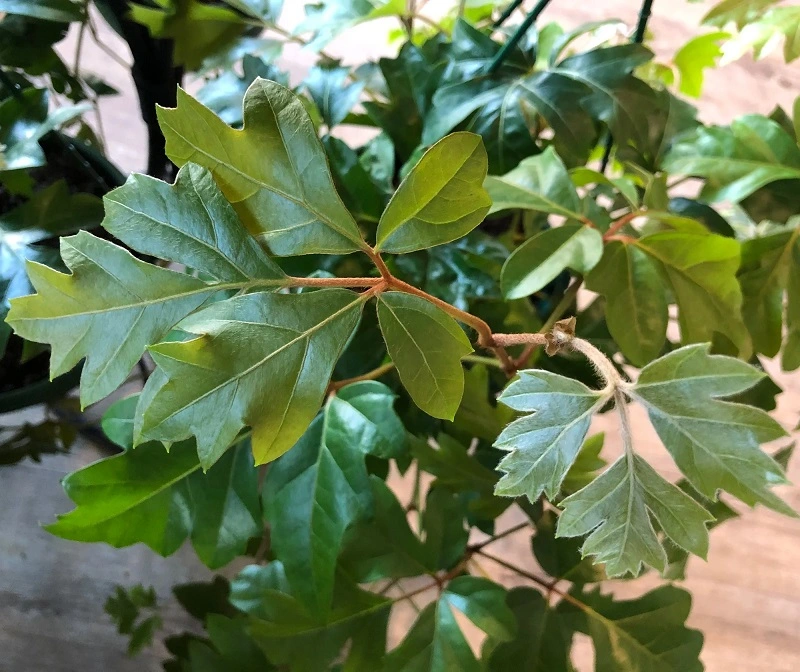
Prayer plant ‘Fascinator Tricolor’
Maranta leuconera ‘Fascinator Tricolor’ is an intriguing indoor shade plant of a dangling character. Its branches aren’t long, but the leaves’ surface and shape droop downwards. The stems usually aren’t longer than 30-35 cm (12-14 in).
This variety of prayer plant has noteworthy colors. There is an interesting pattern on the leaves. Dark green makes the base color accent. The middle is light-green. Red nerves come from the middle as well.

Low light indoor climbing plants
Low light houseplants of a climbing character are perfect e.g., for vertical gardens. They are typically not as difficult to take care of, although a lot depends on the species. Take a look at the most popular plants from this group.
Heartleaf philodendron
Heartleaf philodendron (Philodendron scandens) is one of the easiest houseplants to grow. It doesn’t have any complicated needs, and most importantly – doesn’t require a lot of sunlight to properly grow. The fact that it can be shaped by trimming is another advantage. We recommend equipping the houseplant in a bamboo stake or a special frame for the branches to climb.
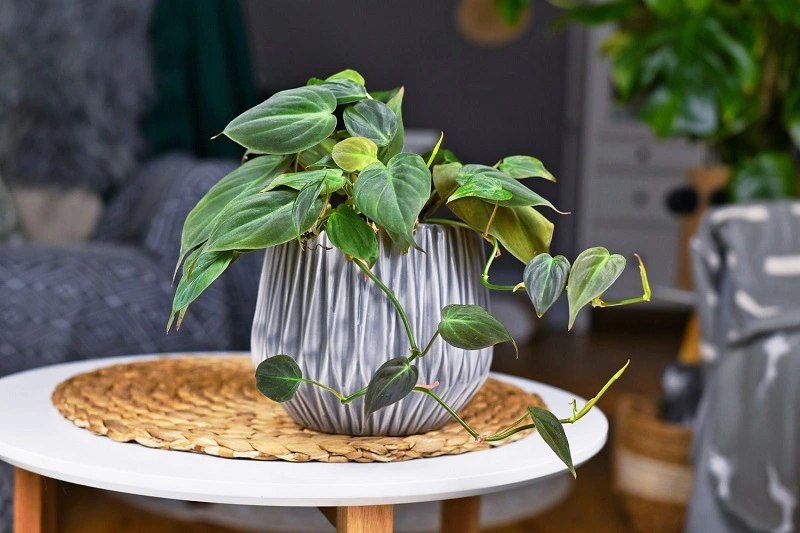
Satin pothos
Satin pothos (Scindapsus) is a shade-loving indoor vine, which is not widely known – even among experienced gardeners. The plant seems to be underrated – but it’s fascinating, so it deserves recognition.
Pothos originated from Asia, where it grows naturally in rainforests. It develops characteristic long, thin stems, and plenty of leaves. The leaf surface is the most interesting element of the vine, as it’s speckled, which looks intriguing.
The shade-loving vine blooms in its natural habitat. It’s rare in domestic conditions, although it may happen – it’s a sign the plant has the best possible growing conditions.
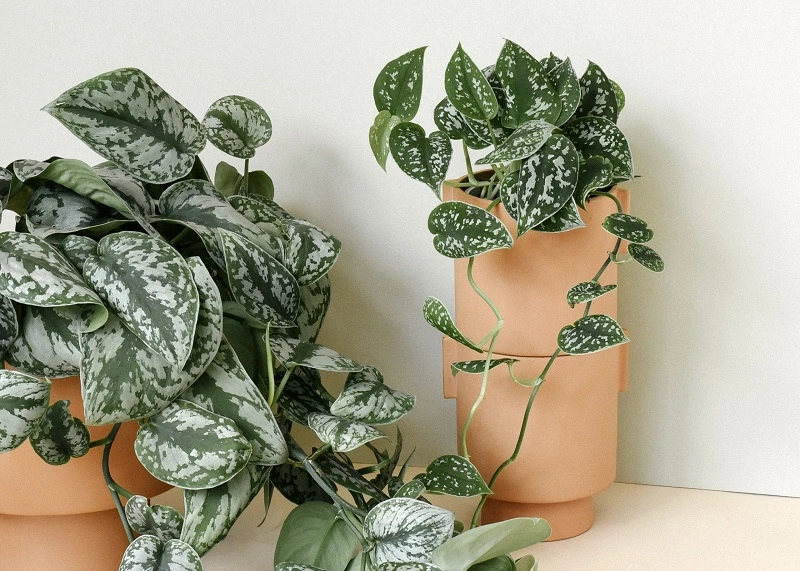
📍 Are indoor shade plants difficult to grow?
Low-light indoor plants aren't very demanding – which makes them perfect for beginner gardeners. Note that every species requires individual treatment. Some plants require more, other less sunlight. It's similar with watering, trimming and fertilizing.
📍 What are the most popular indoor shade plants for pots?
The most popular shade-loving plants are definitely peace lily and common ivy. Other commonly grown species include button fern, scindapsus and philodendron. Maranta, a hanging indoor shade plant also looks very interesting.
📍 Do low-light indoor houseplants need frequent watering?
Watering is an individual matter for all shade-loving houseplants. Most species of this type can store water. Because of this, and little access to sunlight, frequent watering is not recommended.
📍 Where to buy plants for dark rooms?
Shade-loving houseplants are quite popular and commonly available. They can be easily purchased in garden stores, flower shops, and often in supermarkets. What's more, many places sell such plants online.
Featured articles




